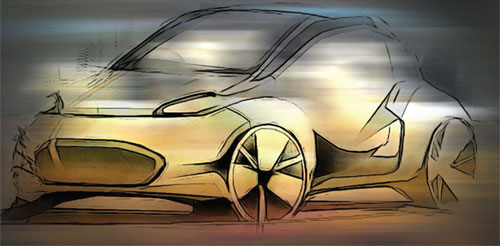Automotive industry plays a major role for any growing economy and also plays an important role in country’s rapid economic and industrial development. Indian automotive industry contributes significantly to the overall GDP of the nation and also provides significant business and employment opportunities. Today’s car is already packed with electronics and, has the highest density of electronic components as compared to other consumer machines. A plethora of technologies powers the car today and these technologies fall into three domains: safety & security, infotainment & telematics, and powertrain (engine and transmission, including the other components as they are an integral part of transmission.) fuel economy. Infotainment and telematics are addressed by technologies that enable smart traffic management, positioning & location-based services, car-to-car and car-to-infrastructure communication and in the future, perhaps autonomous driving. The Indian automotive industry is witnessing a phase of rapid transformation and growth, mainly driven by stable economic growth and infrastructure development. Along with the Auto industry the auto components industry is also gearing up to compliment it.
Automotive electronics has gained importance on account of the growing consumer demand for performance, safety, comfort and entertainment. The car of future is also expected to be equipped with even more advanced features that would help prevent accidents, entertain occupants and at the same time is eco-friendly. Automotive companies are also looking to stretch their market by introducing such novel features.
Innovation in the automotive electronics has been growing and it plays a key role when it comes to road safety. There are several market drivers like economic, ecology and safety that are critical for the automotive sector. The automotive market is impacted by these economic factors including global GDP,
consumer confidence, employment levels, availability of credit and fuel prices. Typically, economic factors that impact disposable income also drive the automotive sector. In addition to economic drivers, the automotive sector is impacted by ecological and safety factors and concerns that are quite often mandated by governments, including fuel economy and CO2 emission levels. Advances in electronics have enabled automotive manufacturers to increase the value in their products by offering more features and improved reliability.
New technologies evolving in this sector include semiconductor electronics capable of delivering more efficient power management and conversion systems. These products are important drivers of improved fuel economy and emissions performance.
The Indian auto component industry is expected to register a turnover of US$ 66 billion by FY 15-16 with the likelihood to touch US$ 115 billion by FY 20-21 depending on favorable conditions, as per the estimates of Automotive Component Manufacturers Association of India (ACMA). In addition, industry exports are projected to reach US$ 12 billion by FY 15-16 and add up to US$ 30 billion by FY 20-21.
Also the annual market for passenger cars which is currently 2 million is set to touch 5 million by 2020. Today car makers are competing to bring in advanced features, connectivity and entertainment, advanced safety and improved fuel efficiency to their products to attract potential buyers. To address this ever increasing list of consumer needs, more and more technological advancements will happen and automotive electronics will play a pivotal role to satisfy all the user requirements. This paves way for complex electronic systems and providing cost competitive electronic solutions is a challenge and an opportunity for Indian automotive companies.
Industry analysts predict that 100 percent new cars would be Internet-enabled by 2025. IT would be an industry revolution that would redefine the driving experience and create opportunities for explosive business growth around the globe with Telematics playing a key role.. According to industry experts, global auto companies are closely watching the Indian market to leverage the region as a global sourcing hub.
As with consumer electronics, technology has transformed the automotive segment with the rising introduction of sophisticated features such as seamless connectivity with mobile devices, advanced driver safety and in-vehicle infotainment. These features are not just restricted to the luxury vehicles, but have trickled down to lower segments too, proving to be a new factor of product differentiation.
While market potential and opportunities remain vast, the industry will be poised with important challenges and bottlenecks that need to be mitigated in the most cost effective and efficient manner, to attain common objectives.







